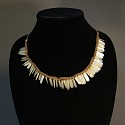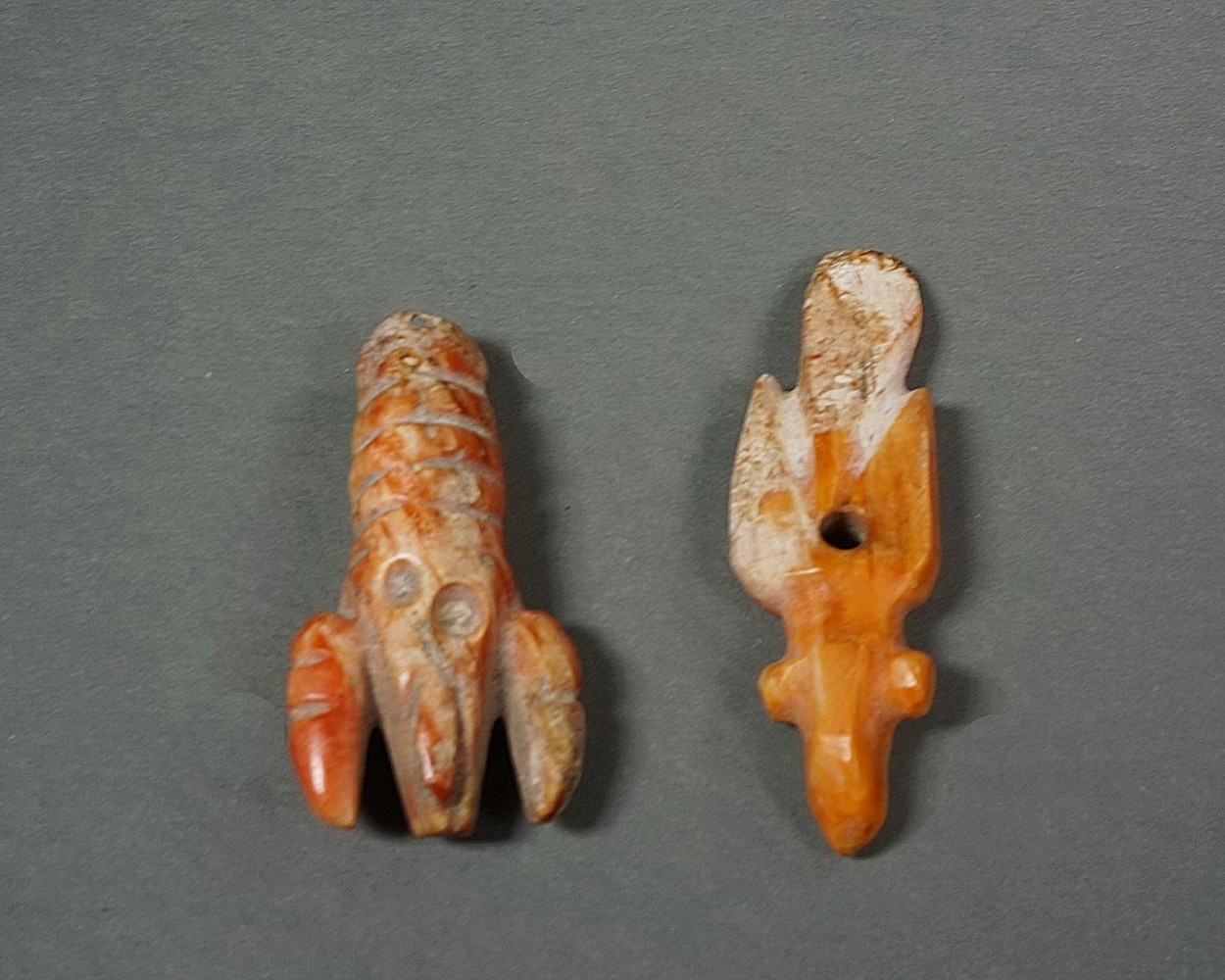




Peru, Chimu Carved Crayfish and Bird Pendants Carved from Spondylus Shells
The pendant on the left depicts a crayfish, while the one on the right represents a marine bird. Crayfish are found in the fresh water rivers along the Peruvian coast. Both pendants have suspension holes for attachment to a bracelet or necklace. Best seen from above, the bird has protruding eyes and a long tail. Both items are the types of Spondylus artifacts that are found on Peruvian North Coast Capa Pacha (child sacrifice ceremony). This is in discussed in PYRAMIDS OF TUCUME- The quest frof the Peru's Forgotten City by Thor Hyerdahl and Daniel Sandweisspg,106-112
Period: Peru, Late Chimu, North Coast, c. AD 1100-1530
Media: Shell
Dimensions: Crayfish Length: 1 3/8"
Bird Length: 1 1/2"
$1,250
N7002
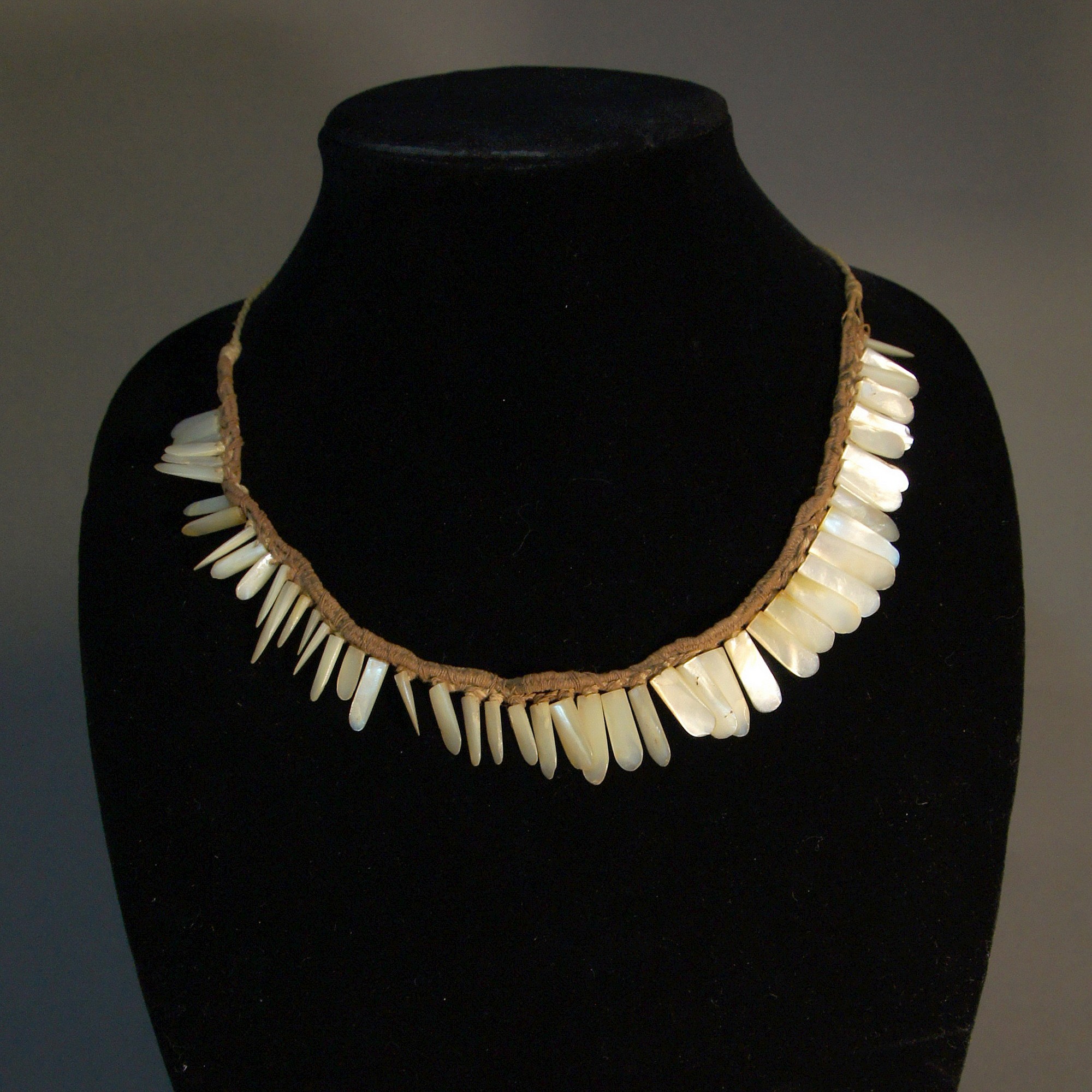
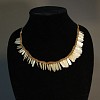




Peru, Chimú Necklace of Mother of Pearl on Original Cotton Line
There are 50 matched mother-of-pearl elements each with a single suspension hole starting at the top and exiting from the side and sewn on a continuous strand around a double cotton cord. Similar mother-of-pearl tab shaped beads are on a pectoral in the American Museum of Natural History and illustrated in THE INKA EMPIRE AND ITS ANDEAN ORIGINS by Craig Morris, pl 131.
$2,800
m7148
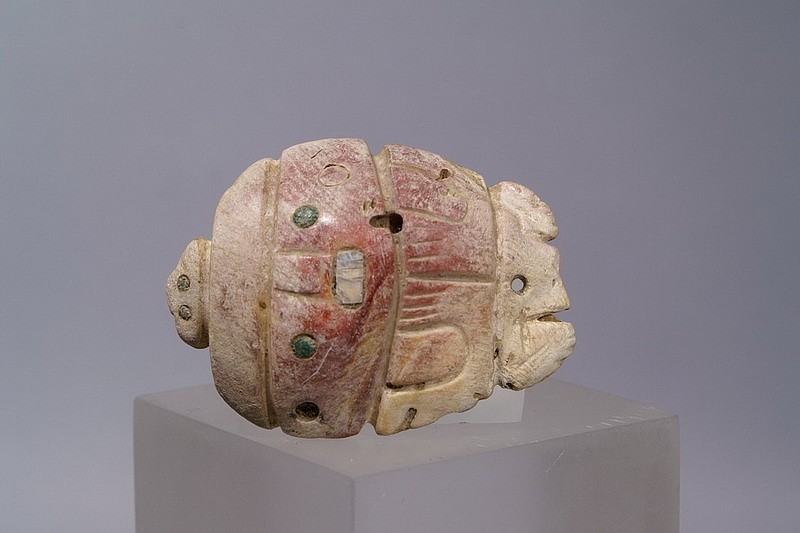


Peru, Chimu Shell Turtle Pendant
This turtle head and carapace have inlays of turquoise and mother of pearl. This is an unusually large shell, carved with double imagery. A human figure appears on the carapace when the pendant is vertical. When horizontal, the shell appears as a turtle, with a small head at the top, and tail and rear flippers at the bottom. From a Private New York collector prior to 1980's. Published in Ocean Fishing in Pre-Columbian Chile and Peru, plate 60.
Period: Peru, Chimu, North Coast, circa AD900-1350
Media: Shell
Dimensions: Height: 3" inches
Condition: As found with original inlays.
$2,900
M8027




Peru, Chimú Wood Earspool with Inlaid Shell Deity
The Chimú were renowned for their sophisticated craftsmanship. This North coast Chimú earspool features a male ruler wearing an elaborate semi-circular headdress and holding a scepter in each hand, portraying power. The earspool is particularly large and decorated with cut inlays of varying shades of spondylus and mother-of- pearl shells. Highlights of turquoise and purple shells embellish the design. The mosaic is laid out of a thin layer of a dark resin material set on a circular wood back, which is attached to a tapering wood shaft. The outer edge of the mosaic is adorned with series of wave motifs, connecting representing the Chimú marine environment. The larger ear ornaments were worn by high-ranking personage. The more important the person, the larger the ear pool. This earspool likely belonged to a male nobleman with a high degree of power and authority. A very similar ear ornament is illustrated on the front cover of Alt-Peru: Auf den Spuren der Zivilisation (Old Peru: On the Trail of Civilization), published in 1986 by the Roemer Museum in Vienna.
Media: Shell
$15,000
p4200



Peru, Early Middle Horizon Mother of Pearl Round Ear Spool Front with 13 Petals
This is a very large piece for a mother of pearl carving and must have come from a very large shell. The 13 petal incised design does not represent a specific flower, but instead is an abstract form depicting a floral shape. The center hole with incised ring is typical of Late Chavin/Early Moche iconography.
Period: Peru, Chavin, Late phase, North Coast, c. 600 - 400 BC
Media: Shell
Dimensions: Diameter: 2"
Price Upon Request
m7118



Peru, Inca Carved Spondylus Shell in the Form of a Female
The female is holding her hands to her belly. The shell was carved in such a way that the front of the doll is reddish-orange and the rear is the white part of the Spondylus shell. These carved dolls were placed in burials of young girls as a sacrifice.
Period: Peru, Inca, South Coast, circa AD1200 -1532
Media: Shell
Dimensions: Height 4cm
Price Upon Request
N5048
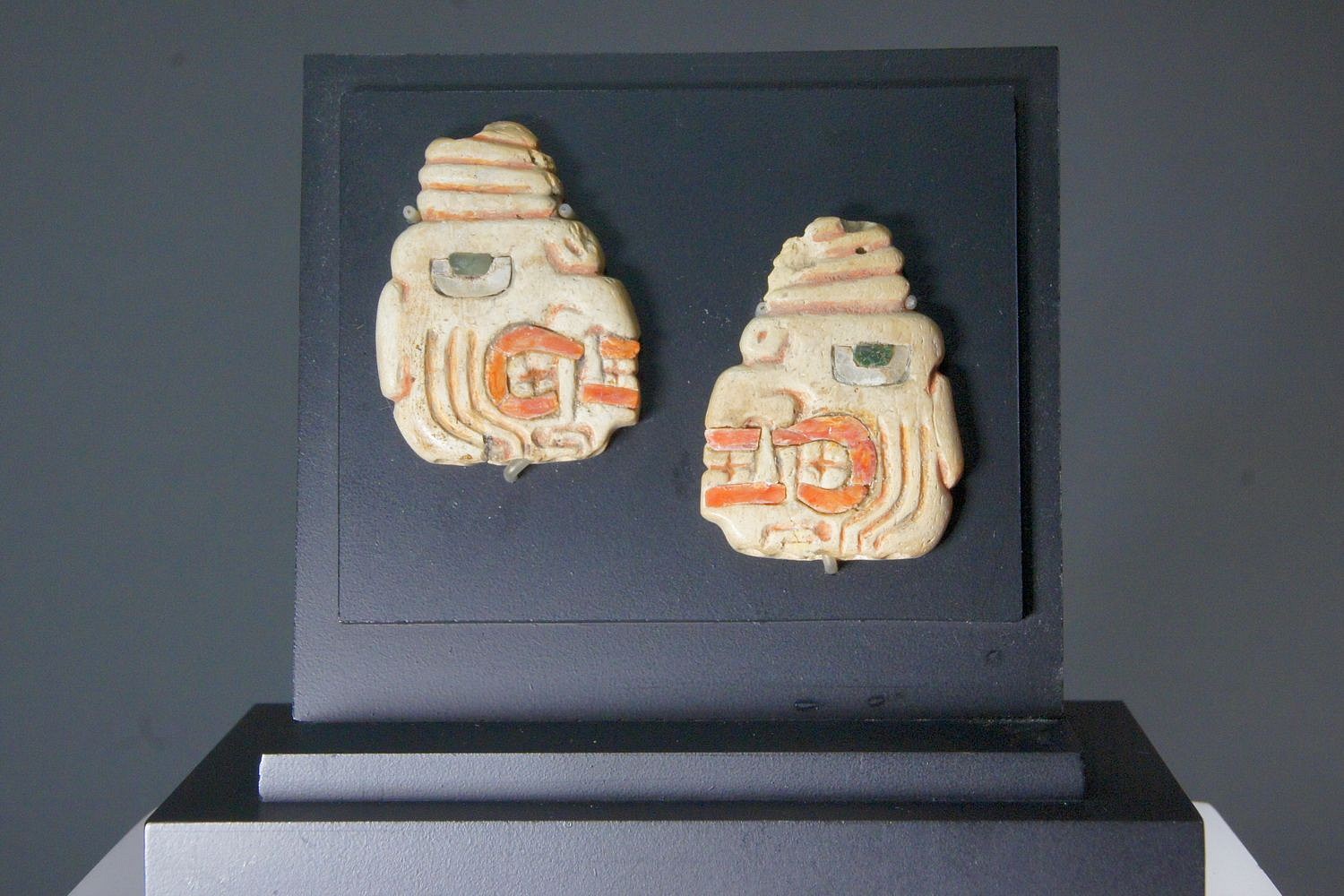


Peru, Pair of Chavi n Shell Ear Pendants with Fanged Deity Heads Wearing Turbans
This pair of ear pendants inlaid eyes with shell and turquoise pupils. The teeth are also inlaid with shell. Both profiles wear knotted turbans. The faces are similar to the large stone tenoned heads found at ChavÃn de Huantar. A similar pair can be found in the "Handbook of South American Indians," Volume II, Julian H. Steward, ed. (1963: pl. 62).
Period: Peru, Chavïn, Cupisnique, Middle Phase, North Coast, circa 1200-800BC
Media: Shell
Dimensions: Height 1 3/4" x Width 1 1/2"
$7,500
97137

